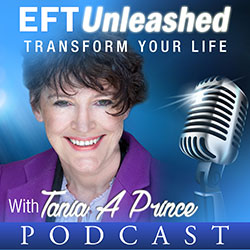Public Speaking: The Power of Pausing using EFT and NLP
Powerful presenters are masters at the art of pausing. Pauses can dramatically increase the effectiveness of a presentation. Of course we are talking about pauses that either occur naturally or are used for effect by the presenter, as opposed to the awkward pause that occurs as a result of the mind blanking. Big difference!
Pauses can be used in several differenct ways. They can be used to create humour in a presentation. They can also make the presentation much more entertaining and engaging. When used correctly they are a powerful tool that presenters can use to their advantage.
Pauses send a very powerful message to your audience, and that is…….”I’m confident”. The message is, “I am comfortable and in control”.
Unfortunately, people who are nervous often feel extremely uncomfortable with pauses and the silence that ensues. In fact nerves in public speaking tends to lend itself to the presenter rushing the presentation and missing out pauses. They also feel under pressure to fill silences. Thus the message shouted out to the audience is one of nervousness. Not exactly the way you want to come across to your audience.
So how can you begin to get comfortable with pauses and those silent moments? Now there are three different ways to begin to master the art of using pauses.
1. Just begin to put them into your talks, try them out.
2. A great way to begin to develop any new skill is by using the NLP technique of, new behaviour generator. Basically this is a technique where you identify a role model who has the behaviour that you would like to have. Then you imagine watching them give the presentation, noting expressions, how they move, how they speak etc.
Once you have done this a few times you then imagine yourself doing exactly what they did. As you do that modify the behaviour to suit WHO YOU ARE. (You want it to be right for you and not just mimicry). Once you are comfortable with these adjustments, then you imagine stepping into that you and run it from an internal perspective, looking out of your eyes as if you are doing it. Basically you are programming the behaviour into your neurology. So that now it becomes a natural part of your behaviour.
3. Clear out your discomfort with pausing, using techniques such as EFT, TAT or NLP.
This method takes out the blocks that are stopping this natural behaviour occuring. When you take out the discomfort around the pauses and silence you quite naturally find that you are automatically pausing, you don’t have to think about it. It just becomes a natural part of your presentation for the most part out of your conscious awareness. Pausing that occurs in these circumstances tend to work better.
Method one can be fraught with problems. When we naturally pause in conversations etc we are picking up cues etc from our environment, in other words no thought goes into the process, we quite naturally do it. Consciously trying to control this behaviour can lead to the person pausing too long or not long enough etc. It can be done but it takes effort.
Methods, two and three cause behaviour to be controlled by the unconscious mind, the part of the mind that runs processes such as breathing, focussing the eyes, etc. In other words we just do it and for the most part it tends to out of our conscious awareness, just automatic.
This method takes out the blocks that are stopping this natural behaviour occuring. When you take out the discomfort around the pauses and silence you quite naturally find that you are automatically pausing, you don’t have to think about it. It just becomes a natural part of your presentation for the most part out of your conscious awareness. Pausing that occurs in these circumstances tend to work better.







Hi,
If I may add, you can use this technique to kill your fear:
“Imagine everyone in the group is looking at you with smiling adoration. Feel that they can’t wait to hear the next thing you’re going to say. See them nodding approvingly and occasionally glancing at each other, astonished at the depth and breadth of your wisdom. If you do, if you tell yourself you are the best speaker this audience has ever had the good fortune to hear, you will be. And when you realize that, your fear and anxiety will – poof!- disappear.”